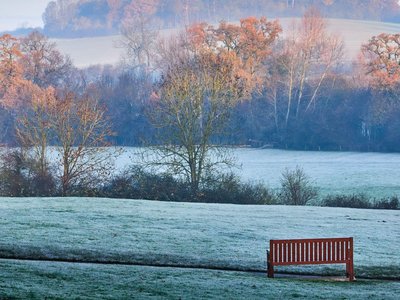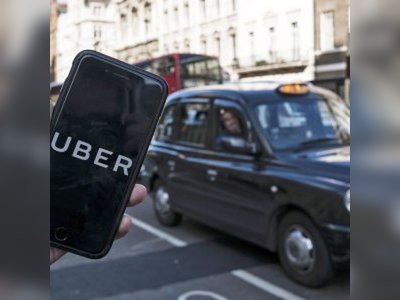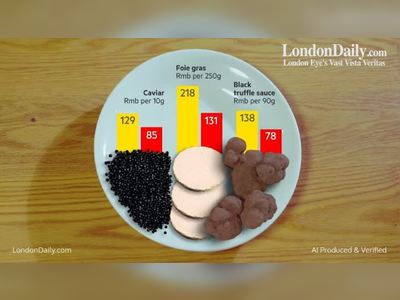
New smart motorway plans being scrapped
Some 14 planned schemes, including 11 already on pause and three down for construction, will be scrapped due to a lack of public confidence and finances.
Smart motorways are a stretch of road where technology is used to regulate traffic flow and ease congestion.
They also use the hard shoulder as an extra lane of traffic, which critics claim has led to road deaths.
Existing smart motorways - making up 10% of England's motorway network - will remain but will undergo a previously announced safety refit to create 150 more emergency stopping places, and improve stopped vehicle detection technology.
Prime Minister Rishi Sunak said "all drivers deserve to have confidence in the roads they use to get around the country".
Mr Sunak, who pledged to ban smart motorways during his leadership campaign last year, said: "Many people across the country rely on driving to get to work, to take their children to school and go about their daily lives and I want them to be able to do so with full confidence that the roads they drive on are safe."
The Department for Transport said constructing the schemes would have cost more than £1bn, while cancelling them would allow more time to track public trust in smart motorways over a longer period.
Seven of the 14 projects that have been cancelled were going to involve converting stretches of motorway into 'all-lane running' roads where the hard shoulder is permanently removed - they will now remain 'dynamic' smart motorways where the hard shoulder can be opened as an extra lane during busy times.
The construction of two stretches of smart motorway from junctions six to eight on the M56, and from 21a to 26 on the M6, will continue as they are already more than three quarters complete.
Smart motorways were developed in order to create more capacity and cut congestion on the roads - without having to spend extra money and cause disruption building whole new ones.
However, they have been criticised by MPs and road safety campaigners, including the AA and RAC.
Claire Mercer, whose husband died on a smart motorway in South Yorkshire in 2019, welcomed the move but pledged to continue campaigning for the hard shoulder to return on every road.
Jason Mercer and another man, Alexandru Murgeanu, died when they were hit by a lorry on the M1 near Sheffield after they stopped on the inside lane of the smart motorway following a minor collision.
Mrs Mercer said: "I'm particularly happy that it's been confirmed that the routes that are in planning, in progress, have also been cancelled. I didn't think they'd do that.
"So it's good news, but obviously it's the existing ones that are killing us. And I'm not settling for more emergency refuge areas."
Mrs Mercer's MP, Labour's Sarah Champion for Rotherham, said she was relieved the government had listened to motorists. But she said she wanted to know if schemes currently in construction would be restored and why a ban had taken so long despite a government review and two parliamentary select committee inquiries.
In 2020, a BBC Panorama investigation found some 38 people had died in the previous 5 years on smart motorways.
AA president Edmund King said: "We have had enough coroners passing down their deadly and heart-breaking judgments where the lack of a hard shoulder has contributed to deaths.
"At last the government has listened and we are delighted to see the rollout of smart motorways scrapped… We would also like to see the hard shoulder reinstated on existing stretches in due course."
Transport Secretary Mark Harper said: "Today's announcement means no new smart motorways will be built, recognising the lack of public confidence felt by drivers and the cost pressures due to inflation."
What is a smart motorway?
There are three main types:
* controlled, which have a permanent hard shoulder, but use technology such as variable speed limits to adjust traffic flows
* dynamic, where the hard shoulder can be opened up at peak times and used as an extra lane; when this happens, the speed limit is reduced to 60mph
* all-lane running, where the hard shoulder has been permanently removed to provide an extra lane; emergency refuge areas are provided at regular intervals for cars that get into trouble
All three models use overhead gantries to direct drivers. Variable speed limits are introduced to control traffic flow when there is congestion, or if there is a hazard ahead. These limits are controlled by speed cameras.
The following schemes have been cancelled:
New all lane running smart motorways
M3 junction 9-14
M40/M42 interchange
M62 junction 20-25
M25 junction 10-16
Dynamic hard shoulder to all lane running conversions
M1 junction 10-13
M4-M5 interchange (M4 junction 19-20 and M5 junction 15-17)
M6 junction 4-5
M6 junction 5-8
M6 junction 8-10a
M42 junction 3a-7
M62 junction 25-30
Pipeline schemes
M1 North Leicestershire
M1 junctions 35A-39 Sheffield to Wakefield
M6 junctions 19- 21A Knutsford to Croft










